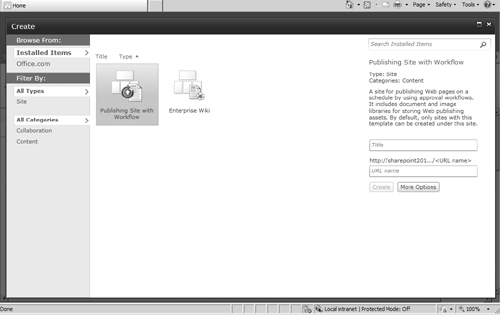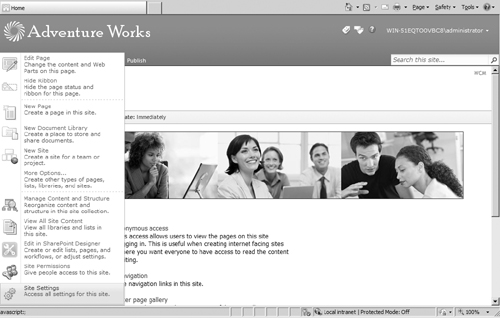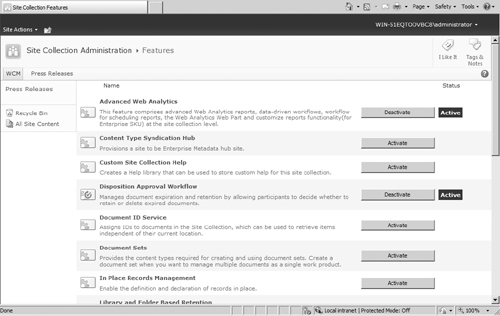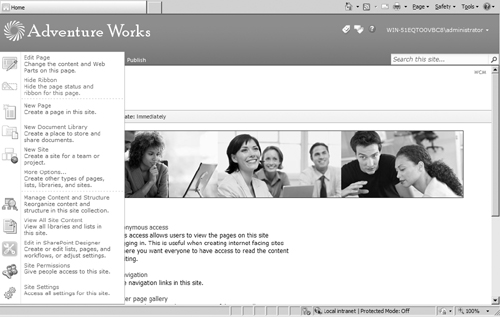Web Publishing 101: Publishing Sites
There
are different kinds of site templates within SharePoint (Collaboration,
Meeting, Enterprise, Publishing, Custom). The publishing site templates
provide additional features that enable business users to create and
manage Web content on a page (or create brand new Web pages). For some
people, this may sound a lot like a wiki site. Isn’t a wiki site also
an easy way to create new Web pages and update existing Web pages? Yes.
The main difference is that wikis are a geared toward sharing ideas
within a community. Wikis provide Web pages that can be quickly edited
to record information and then linked together through keywords, but
they are far less powerful than the full-fledged WCM pages. For
example, take a look at www.xbox.com.
This is not a wiki—it is a highly stylized Web site with a number of
controls to keep it branded properly. In publishing sites, contributors
can work on draft
versions of pages and publish them to make them visible to readers.
Publishing sites also include document and image libraries for storing
Web publishing assets such as site pages and images.
Take a look at a SharePoint 2010 publishing site. Publishing site templates are available in the Content & Data tab (see Figure 4). When you’ve created a publishing site, SharePoint provides a number of new menu options.

Interestingly, the Web publishing features are
actually provided by a SharePoint Feature. This means that you can add
publishing features to any SharePoint site. First, you must turn on the
Publishing feature in the Site Collection. Try the following: Create a
regular SharePoint team site. Notice how you get the standard Site
Actions options as depicted in Figure 5.
Next, go to Site Settings. Under Site Administration, select Site
Features. The Publishing feature is what helps the SharePoint site to
support Web publishing features. Enable this feature by clicking
Activate (see Figure 6).
Go back to your site; it will look the same. But if you look more
closely, you’ll notice some key changes. For example, the Site Actions
menu has a number of additional options related to publishing, like
Create Page (see Figure 7).



Although the Publishing Feature can be used
with any SharePoint site, you’ll probably plan to use it more to create
Internet-facing sites. The Internet Presence template that ships with
SharePoint is a good example—it uses a set of master pages, layouts,
and styles. However, your layout and
styles will likely need to be very different from the example template.
Hence, when creating your Internet site, you’ll probably want to start
with a blank slate and build from there. This is an important
consideration when planning an Internet-facing site.